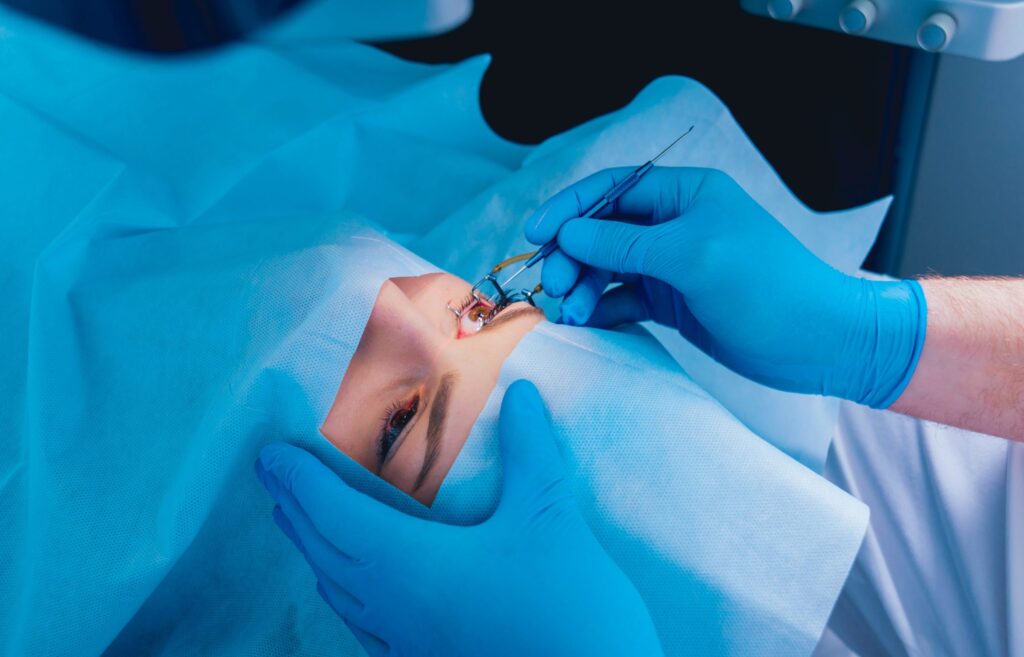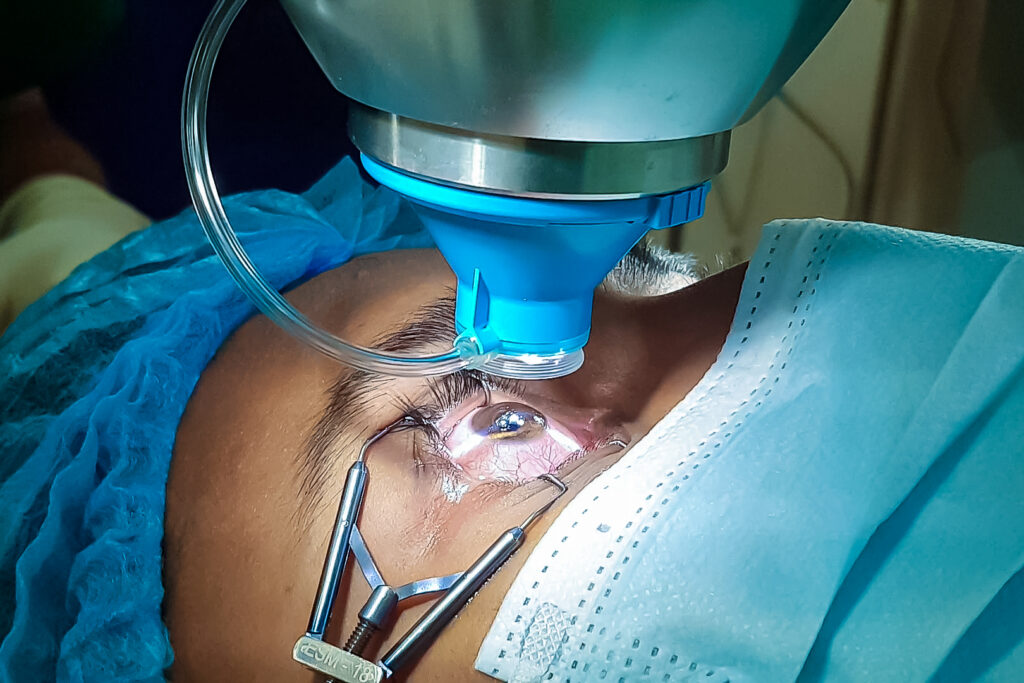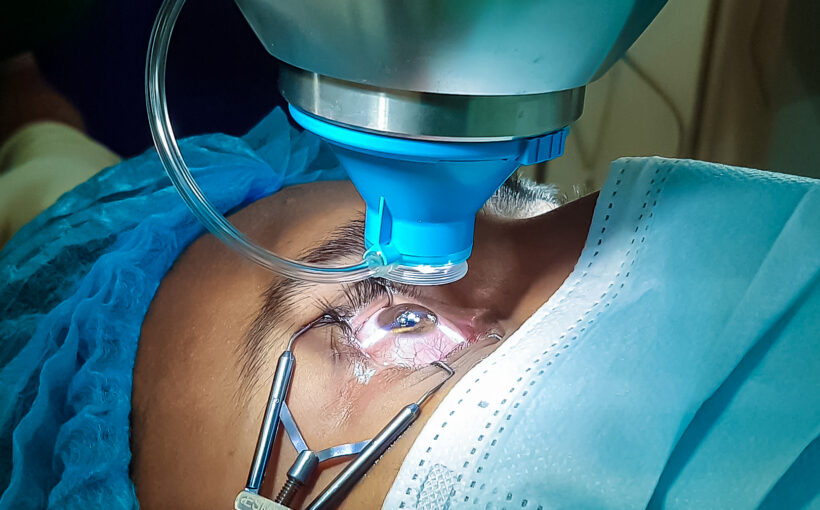LASIK surgery has become a popular option for people seeking to improve their vision and reduce dependency on glasses or contact lenses. However, not everyone is a suitable candidate for this procedure. Various factors need to be taken into consideration to determine whether LASIK is the right choice for an individual. In this article, we will explore the different factors that play a role in evaluating candidacy for LASIK.
Understanding LASIK: A Brief Overview

Before delving into the factors that determine LASIK candidacy, let’s first have a basic understanding of what this procedure entails. LASIK, which stands for Laser-Assisted In Situ Keratomileusis, is a surgical technique used to correct refractive errors such as nearsightedness, farsightedness, and astigmatism. It involves reshaping the cornea, the clear front surface of the eye, to improve how light rays are focused on the retina.
What is LASIK?
LASIK is a two-step process. First, a thin flap is created on the cornea using a microkeratome or femtosecond laser. This flap is then lifted, and an excimer laser is used to remove a precise amount of tissue from the inner layer of the cornea. By modifying the cornea’s shape, LASIK corrects refractive errors and helps patients achieve better visual acuity.
How Does LASIK Work?
The reshaping of the cornea during LASIK surgery aims to alter its focusing power. For individuals with nearsightedness (myopia), the cornea is flattened to reduce excessive focusing. Conversely, for those with farsightedness (hyperopia), the cornea is steepened to increase its focusing power. The procedure also addresses astigmatism by smoothing out irregular corneal surfaces.
During the LASIK procedure, the patient’s eye is numbed with eye drops to ensure a painless experience. The surgeon then uses a specialized instrument, either a microkeratome or a femtosecond laser, to create a thin flap on the cornea. This flap is carefully lifted to expose the underlying corneal tissue.
Once the cornea is exposed, an excimer laser is used to remove a precise amount of tissue from the inner layer. The excimer laser works by emitting cool ultraviolet light, which breaks the molecular bonds of the corneal tissue without generating heat. This precise tissue removal allows for the reshaping of the cornea to correct the refractive error.
After the necessary tissue has been removed, the surgeon carefully repositions the corneal flap back into place. The flap adheres naturally without the need for stitches. The cornea begins to heal immediately, and most patients experience improved vision within a day or two after the procedure.
It is important for patients to follow post-operative instructions provided by their surgeon to ensure proper healing and minimize the risk of complications. These instructions may include using prescribed eye drops, avoiding rubbing or touching the eyes, and wearing protective eyewear during activities that may pose a risk to the eyes.
LASIK is a highly effective procedure, with the majority of patients achieving significant improvements in their vision. However, as with any surgical procedure, there are potential risks and complications that patients should be aware of. These can include dry eyes, glare, halos, and difficulties with night vision. It is crucial for patients to have a thorough consultation with an experienced LASIK surgeon to determine their candidacy and discuss the potential benefits and risks.
Determining Candidacy for LASIK

While LASIK can be transformative for many individuals, not everyone is an ideal candidate for this procedure. Several factors must be considered to ensure safety and optimal results. Let’s explore these factors in detail.
Age Considerations for LASIK
Age plays a crucial role in LASIK candidacy. Generally, individuals must be at least 18 years old to undergo LASIK. This age requirement ensures that the eyes have fully matured and stabilized, allowing for accurate measurements and reliable outcomes. Moreover, the FDA recommends waiting until the mid-20s when eyeglass prescriptions often stabilize before considering refractive surgery.
However, it’s important to note that age alone does not determine eligibility for LASIK. Other factors, such as overall eye health and refractive stability, must also be taken into account. The eye’s ability to heal and respond to the procedure can vary from person to person, regardless of age.
Health Conditions and LASIK Candidacy
Various health conditions may impact one’s suitability for LASIK. Individuals with certain autoimmune diseases, such as rheumatoid arthritis, lupus, or Sjogren’s syndrome, may have compromised healing responses that can affect the outcome of the procedure. It is crucial for individuals with these conditions to consult with their ophthalmologist to determine if LASIK is a safe option for them.
Pregnant or breastfeeding women are advised to delay LASIK until their hormone levels stabilize. Hormonal changes during pregnancy and breastfeeding can affect the stability of vision and may lead to inaccurate measurements for the procedure. Waiting until hormone levels stabilize ensures that the LASIK procedure can be performed with optimal accuracy and safety.
In addition to autoimmune diseases and hormonal changes, other underlying eye conditions may also affect eligibility for LASIK. Individuals with glaucoma, cataracts, or severe dry eye syndrome may need to explore alternative vision correction options, as these conditions can impact the success of LASIK surgery.
Eye Health and Refractive Stability
Good overall eye health is a prerequisite for LASIK surgery. An eye examination, including a thorough evaluation of the cornea, retina, and optic nerve, helps determine if any pre-existing conditions or abnormalities may interfere with LASIK outcomes. It is essential for individuals to have a comprehensive eye exam before considering LASIK to ensure that there are no underlying issues that could compromise the procedure’s success.
Furthermore, candidates should demonstrate stable refractive errors for at least a year before considering the procedure. Stability ensures that the measured prescription accurately reflects the individual’s vision needs. This stability is crucial for obtaining optimal results from LASIK surgery.
During the evaluation process, the ophthalmologist will assess the cornea’s thickness, shape, and curvature to determine if LASIK is a suitable option. Additionally, the doctor will evaluate the overall health of the eye, including the retina and optic nerve, to ensure that there are no underlying conditions that could affect the procedure’s success.
In conclusion, determining candidacy for LASIK involves considering various factors such as age, health conditions, overall eye health, and refractive stability. It is essential to consult with an experienced ophthalmologist who can thoroughly evaluate these factors and provide personalized recommendations. LASIK can be a life-changing procedure for many individuals, but ensuring eligibility and safety is paramount for achieving the best possible outcomes.
Lifestyle Factors in LASIK Candidacy
In addition to medical considerations, lifestyle factors must also be taken into account when evaluating LASIK candidacy. Making an informed decision about whether to undergo LASIK surgery involves considering how the procedure may impact various aspects of an individual’s life.
Occupational Considerations
Individuals with certain occupations may need to consider how LASIK may impact their work. For example, individuals in professions where the use of protective eyewear is necessary, such as military personnel or construction workers, should discuss their specific needs with a LASIK surgeon. While LASIK can significantly improve vision, it is important to understand any potential limitations or precautions that may be required in these work environments.
Furthermore, individuals with jobs that involve exposure to dusty or hazardous environments may require additional precautions after LASIK to minimize potential risks. The surgical procedure itself is safe and does not pose any immediate threats, but it is important to follow post-operative care instructions to ensure proper healing and minimize the risk of complications.
Sports and Recreational Activities
For those who participate in contact sports or activities with a risk of eye injury, LASIK can provide the freedom to engage in these activities without the hindrance of glasses or contact lenses. Imagine the joy of diving into a swimming pool without the worry of losing a contact lens or playing basketball without the constant interruption of foggy glasses!
However, it is essential to discuss the specific requirements of each activity with the surgeon to ensure that LASIK is a suitable choice. Some sports may have unique demands on vision, such as rapid changes in focus or exposure to extreme environmental conditions. Your surgeon will be able to provide guidance on whether LASIK can meet these demands and help you make an informed decision.
Additionally, LASIK can enhance the overall enjoyment of recreational activities. Whether it’s hiking, skiing, or simply enjoying a day at the beach, LASIK can provide the freedom to fully immerse yourself in these experiences without the hassle of glasses or contact lenses. The crispness and clarity of your vision after LASIK can truly enhance your appreciation of the world around you.
Remember, LASIK is a personal decision that should be made after careful consideration of both medical and lifestyle factors. By discussing your specific needs and expectations with a qualified LASIK surgeon, you can determine if LASIK is the right choice for you.
Psychological Factors for LASIK Candidates
While physical eligibility is essential when considering LASIK, psychological factors also come into play.
Understanding the Risks and Benefits
Prospective LASIK candidates should have a clear understanding of the potential risks and benefits associated with the procedure. Being well-informed helps individuals make informed decisions and have realistic expectations regarding the outcome. A thorough discussion with a LASIK surgeon can provide valuable insights into the benefits as well as the possible side effects and complications of the procedure.
Setting Realistic Expectations
It is crucial for candidates to have realistic expectations about the results of LASIK surgery. While the procedure can significantly improve visual acuity and reduce dependency on corrective eyewear, it does not guarantee perfect vision or eliminate the need for reading glasses as individuals age. Understanding these limitations allows individuals to make informed decisions and be satisfied with the achieved results.
Financial Considerations for LASIK
The cost of LASIK surgery is an important factor for many potential candidates to consider.
Cost of LASIK Surgery
The cost of LASIK varies depending on several factors such as the geographical location, the surgeon’s experience, the technology used, and the specific requirements of each case. It is essential to obtain detailed cost information during a consultation with the surgeon to understand the financial implications fully.
Insurance and Financing Options
While LASIK is generally considered an elective procedure and not covered by health insurance, some vision plans or flexible spending accounts may offer partial coverage or financing options. It is recommended to consult with insurance providers and explore any available financing plans to make an informed financial decision.
Conclusion
When considering LASIK surgery, evaluating candidacy is crucial to ensure safety and satisfactory results. Various factors, including age, health conditions, eye health, and lifestyle considerations, play a role in determining who is an ideal candidate for LASIK. By discussing these factors with a qualified LASIK surgeon and understanding the risks, benefits, and financial aspects, individuals can make an informed decision about whether LASIK is the right choice for them.
